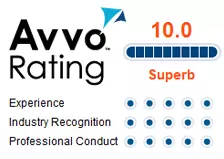The Oakland County Sheriff’s Office is scheduled to implement a new “virtual” work release program by early February, 2010. Virtual work release will consist of an ankle tether using a satellite and radio global positioning system (GPS) monitored by the Oakland County Sheriff. It will give the Sheriff’s Office the ability to carefully track an inmate’s location twenty-four hours a day, seven days a week. The radio technology will even allow a defendant to be tracked inside a home or workplace.
In preparing for the upcoming start date the Sheriff’s Office is meeting with the Oakland County judges to orient them to the virtual work release program. The Sheriff has already met with the Oakland County Circuit Court judges and will be meeting with the District Court Judges in early January.
The eligibility for the new program has not changed. Accordingly, a judge must authorize participation prior to enrollment in the virtual work release program and offenders sentenced on any CSC (Criminal Sexual Conduct) charge are not eligible. Also, there may be no outstanding warrants, holds, or unpaid bonds.
Eligible inmates will be referred to the Jail’s Program Services Unit for an interview. The inmates address will be verified, and they will be oriented to the program. Inmates must provide written documentation verifying employment/school. The vendor for the GPS tether will provide staff to install the tether and Sheriff’s Office Booking staff will process the release. Inmates will be placed on the GPS tether as soon as they have been screened for eligibility and orientated to the rules.
The GPS tether selected by the Oakland County Sheriff is cutting edge technology that will allow authorized individuals such as a judge, probation officer or deputy sheriff to track the defendant’s whereabouts via a password protected web site operated by the manufacturer G4S Justice Services, Inc. Tamper, equipment failure and violation alerts will be sent out by G4S according to Sheriff’s Office parameters.
While on work release the defendant will be subject to certain appropriate “exclusion zones,” and will be allowed to leave their home only for clearly and specifically defined and approved work or school purposes. Exclusion zone violations will typically involve a warrant being issued. The offender is then picked-up and will serve the balance of their sentence confined in jail.
According to the manufacturer’s web site “using a standard web browser from any computer, officers can view and exchange monitoring and tracking data for enrollment, curfew schedules, caseload reviews, agency reports and termination. This information is also stored and monitored by specially trained personnel at our monitoring centers.”
Furthermore, the G4S tether “does not require a base or docking station due to the ability of the device to determine the location from both GPS satellites and cellular phone towers. This enhanced dual monitoring feature allows reliable location tracking from a single device even in impaired environments where RF and GPS alone do not work. The device incorporates a cellular modem and communicates information to the monitoring center over the CDMA network.”
Oakland County Undersheriff Michael McCabe said that the new virtual work release is a child of the new economy. Everyone is looking for ways to cut expenses without cutting services, and the new work release program is a much less expensive way to incarcerate non-violent offenders.
There are also many benefits to the new program. For example, the defendant bears nearly all of the costs of incarceration including the costs associated with tether.
Also, in this very tough economy fewer non-violent offenders will lose their jobs because there is almost no delay between the date of sentencing and the date the offender is actually back at work. With the old program this delay was as much as five to seven days. Now the delay is as short as one to two days tops. There is also no limit to the number of offenders that can be on the program at any one time.
Furthermore, violent offenders are not eligible to participate, and public safety will be further enhanced through random drug and alcohol testing conducted through the Sheriff’s Office Results Program.
As a consequence of these changes and improvements, offenders will be better able to pay back their fines and costs, including restitution and costs of prosecution. Additional savings may come in more defendants deciding to forgo trial in favor of a plea of guilty. When a defendant realizes that they will be able to keep their job and even stay at home during non-work hours the incentive to go to trial is significantly lessened. This will undoubtedly save the costs associated with trial for those individuals who know they are guilty but could not plead guilty for fear of losing their job, their car or even their home.
For all of these reasons, nearly all of the judges have been very receptive to and even excited about the new program. According to Undersheriff McCabe only a small minority have expressed reservations. He expects many of these reservations to diminish once the new program becomes better know and its benefits more fully realized by the participants.
Beginning in January 2010 the “old” non-virtual work release program will be phased out. Inmates sentenced to the old work release will be required to complete their sentence. Their sentencing judge will be contacted for approval to convert the sentence to a tether custody Work Release. If granted, the inmate will be placed out on tether. If not, the inmate will complete their sentence in the Work Release facility. However, there will be an effective date set whereby after that date all Work Release sentences will be a tether sentence. Only inmates finishing up an old Work Release sentence that a judge did not approve tether will be housed in the Work Release Facility.
For more information see: Oakland County Work Release Improved Not Eliminated










{ 9 comments… read them below or add one }
There is a large problem with this approach that we have noticed here in Central Pennsylvania.
How most cell phone tracking works is typically by triangulating the “pings” made by the cell phone to the nearest cell towers. GPS-enabled cell phones don't require cell towers, and may be located anywhere in the world by satellite triangulation in a similar manner. Cell phone companies are required by law in the United States to be able to locate cell phones to an accuracy of 100 feet, so that emergency vehicles will be able to locate the caller in need.
Wait, so what's the problem?
The problem is that cellular technology is susceptible to cell phone tower "sticking" or "ghosting" where the signal refuses to relinquish the signal sent to the older tower in favor of the newer and closer tower.
A GPS tracking device in a cell phone just isn’t as accurate as the various vehicle tracking systems. Cell phones give out a weaker signal and cannot pinpoint location as accurately as a traditional GPS tracker. They also rely on cell phone signals, which are known for not being accurate in all locations. Some people have difficulty getting cell phone reception daily, even in places as common as their own homes.
Smae holds true if you have SiriusXM you know this problem as well. Good luck, but I fear false alarms based upon non-criminal action.
_________________
-Justin J. McShane, Esquire, Harrisburg DUI Lawyer
let get the program in full swing! you say feb and some say jan i ask when! lets ask the oakland sheriff when!
under the new vwr if the judge says no can you put a motion in to fight it i mean if others are getting out with the same charge
you get a old school judge that dose not like vwr what can you do?
This is a very informative blog post of great value to the community. Thanks to the Barone law firm for educating the public and lawyers in Oakland County on this innovative mode of supervision. Hopefully, if this program goes as planned, the county will realize a huge cost-savings.
Re: Michigan DUI Help – New comment requires moderation on: Oakland County’s New Virtual Work Release to Begin Early in 2010
Approve
no tether yet? a lot of people coming in to the twr program as of 2/10/2010 per my son any word why the new people are still going to twr and not vwr? any help would be greatfull
Re: Michigan DUI Help – New comment requires moderation on: Oakland County’s New Virtual Work Release to Begin Early in 2010 Approve
what will be the first move for work release inmates that are in work release now ? i have a son on work release 3 erd dui he got 9 months (june 10 th ) out date
My understanding is that once the new VWR goes into effect, the Jail will ask the sentencing judge, on behalf of the inmate, to place them into the VWR program. If the judge says “no,” then the inmate will stay in the traditional work release program for the balance of their sentence.